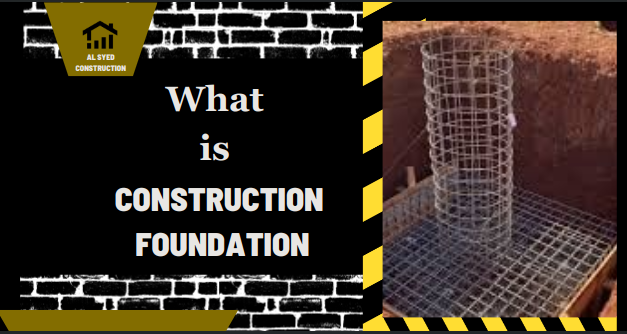Understanding the Backbone of Structures: What is Construction Foundation?
Introduction:
In the realm of construction, the foundation serves as the bedrock upon which the entire edifice rests. It is the silent sentinel that bears the weight of towering skyscrapers, sturdy bridges, and resilient homes. But what exactly is a construction foundation, and why is it so crucial? In this article, we delve into the depths of this fundamental aspect of construction to unravel its significance and explore its various types and construction techniques.
The Significance of Foundations:
Before erecting any structure, it is imperative to establish a solid foundation. Much like the roots of a tree provide stability and support, a well-designed foundation ensures the structural integrity and longevity of buildings and infrastructure. The primary functions of a construction foundation include:
- Load Distribution: The foundation distributes the weight of the structure evenly to the underlying soil or rock, preventing settlement or collapse.
- Stability: It anchors the building against lateral forces such as wind, seismic activity, or soil movement.
- Leveling: Foundations provide a level base for construction, ensuring that the building remains straight and plumb.
- Moisture Protection: Certain types of foundations incorporate measures to mitigate moisture infiltration, safeguarding the structure against damage.
Types of Construction Foundations:
Foundations come in various forms, each suited to different soil conditions, structural requirements, and construction methods. The most common types include:
- Shallow Foundations:
- Strip Foundations: Also known as spread footings, these foundations consist of a continuous strip of concrete that supports load-bearing walls or columns.
- Pad Foundations: Similar to strip foundations, pad foundations are isolated footings that support individual columns or point loads.
- Raft Foundations: Ideal for soft or variable soil conditions, raft foundations distribute the building load over a wide area, reducing soil pressure.
- Deep Foundations:
- Pile Foundations: Piles are long, slender columns driven deep into the ground to transfer structural loads to deeper, more stable strata. They come in various materials such as concrete, steel, or timber.
- Pier Foundations: Pier foundations consist of cylindrical or rectangular columns, often reinforced with steel, drilled or driven deep into the ground to support heavy loads.
Construction Techniques:
The construction of foundations requires meticulous planning, precise execution, and adherence to engineering principles. The following steps outline the typical process of foundation construction:
- Site Preparation:
- Clearing and leveling the construction site to ensure a flat and stable surface.
- Excavating trenches or pits according to the design specifications of the chosen foundation type.
- Footing Installation:
- Pouring concrete into the excavated trenches to create footings for the foundation.
- Reinforcing footings with steel bars or mesh to enhance strength and durability.
- Foundation Construction:
- Erecting formwork to contain the concrete during pouring, ensuring the desired shape and dimensions.
- Pouring concrete into the formwork and allowing it to cure to achieve the required strength.
- Deep Foundation Installation:
- Driving piles or drilling pier shafts into the ground using specialized equipment such as pile drivers or drilling rigs.
- Ensuring proper alignment and verticality of the deep foundation elements to support the structure effectively.
- Quality Control and Testing:
- Conducting inspections and tests throughout the construction process to verify compliance with engineering standards and specifications.
- Testing soil conditions and foundation performance to assess stability and identify any potential issues.
Conclusion:
In essence, the construction foundation serves as the cornerstone of every building and infrastructure project. Its role in providing stability, load distribution, and structural support cannot be overstated. By understanding the significance of foundations and employing appropriate construction techniques, engineers and builders can ensure the safety, resilience, and longevity of the structures they create. As the saying goes, a strong foundation lays the groundwork for a solid future.





Leave a Reply
Want to join the discussion?Feel free to contribute!